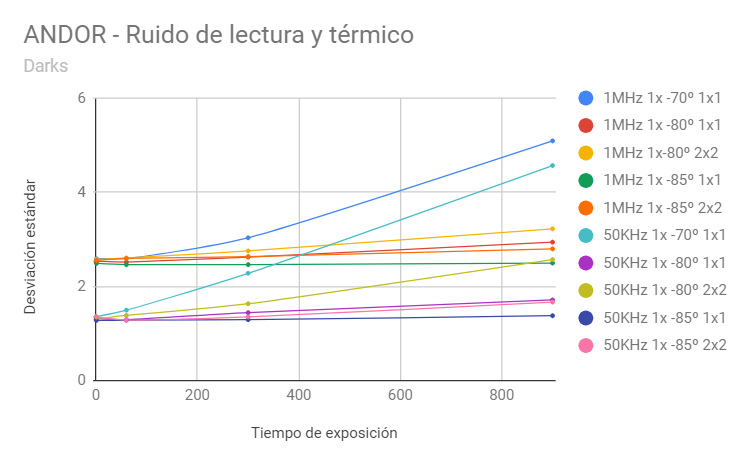General characteristics
| Array | 2048 x 2048 |
| Pixel size | 13.5 µm x 13.5 µm |
| Scale | T150: 0,232 "/pixel ; T90: 0,387"/pixel |
| FoV | T150: 7,92' x 7,92' ; T90: 13,20' x 13,20' |
| Read-out time (fast mode) | 4 s (binning 1x1); 1,5 s (binning 2x2) |
| Read-out time (low mode) | 91 s (binning 1x1); 25 s (binning 2x2) |
| Gain (*) | 4,0 e¯/ADU |
| Read noise | 7 e¯ rms @ 1MHz |
| Dark current | 0,006 e¯/pixel/s (@-80° C) |
| Orientation | North-Up, East-Left |
| Lineality | see Figure below |
(*) Current Configuration: readout velocity 1MHz, gain x1 and 'High Sensibility' mode
Important notes and advices
-
If seeing is bad, binning will be advisable for most applications, in order to improve the signal to noise ratio and also in order to decrease the amount of disk space needed as well as to minimize the overheads (time lost in the CCD readouts).
-
The sky flat-field frames should be taken in the high speed mode because the photon shot noise will be one or two orders of magnitude larger than the readout noise and there will be no clear advantage in using the slow readout mode. This allows one to save valuable time at dusk, when light intensity falls rapidly and one may run out of time to do the flats with the narrowest filters.
-
The flat-field frames can be obtained at the highest resolution mode and later on degraded with software binning to the resolution needed for the different binning configurations.
-
The bias level is different for the different binning configurations possible. Therefore, one should take bias frames in all the binning configurations that one expects to use (typically 1x1 and 2x2).
-
Bias frames should be taken regularly along the observing night. This is advisable because the CCD chip does not have an overscan region. Changes in the bias level above 3 ADUs have not been observed, but just in case, one should take several bias frames per night. This can be done while moving the telescope to another target and will not waste any time.
-
The shutter is an iris shutter of 30mm in diameter. It takes 40ms in opening and closing. For special applications in which a fast sampling speed is needed, the shutter can be kept open in order to avoid the dead time and avoid wear of the shutter. This may be useful for occultation or time critical observations.
-
Currently, the vignetting is a 10% decrease in intensity exists in two of the corners of the chip, very likely due to an insufficient size of the holes of the filter wheel. This is a very small, unimportant vignetting, and can be compensated for by flat fielding. Therefore, it only implies a loss of signal in the order of 10 to 20% within an extension of the order of 1 arcmin.
Filters
The filter wheel provides six positions for 50mm square filters.

